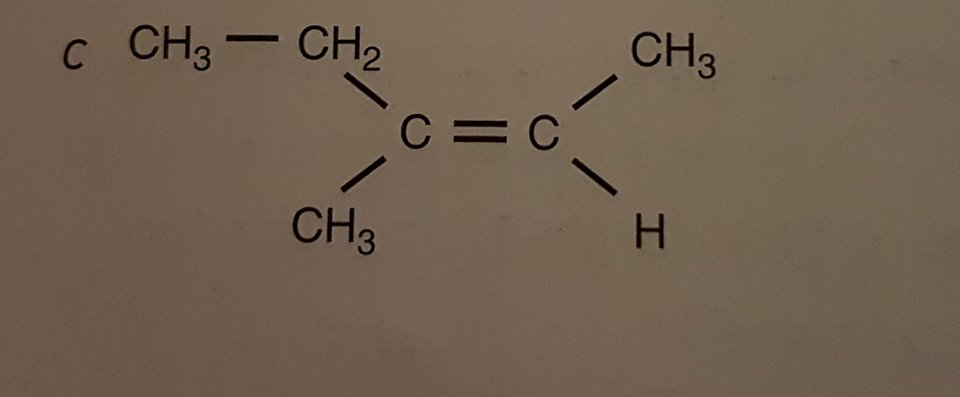My book says this is cis. But I can't see it. Is this a mistake or what?

4 Answers
Your book is ambiguous in saying that. The more better method would have been by using E-Z nomenclature.
Explanation:
In order to know whether a compound is cis or trans , you must know how to assign priority to groups attached to the double bond.
1.Firstly lets assign the carbon on the left side of the molecule as
C1 and the second carbon as C2.
-
At C2 you can see that there are two groups methyl and hydrogen. Since methyl is having carbon centre it gets higher priority because carbon has a greater atomic number than hydrogen. So the high priority is on the upper hand side and the lower on the lower side
-
Coming to carbon C1, the groups are ethyl and methyl respectively. Since both of them contain carbon centres so we have to assign priority according to the next atom in sequence.In ethyl the next atom in sequence is carbon and in the the methyl is hydrogen. Consequently ethyl gets a higher priority. In this case also higher priority group lies on the upper hand side and the lower priority group on lower hand side.
-
So you have higher prior groups on upper side and lower prior groups on lower side. So same types of group are on same side. Hence it is a Z arrangement.
Hope it helps!!
I agree with the book mate...
Explanation:
The large hydrocarbyl group is on the SAME side of the olefinic bond as the methyl group. A cis geometry is specified.
No, it's not a mistake.
Explanation:
Let's do this in steps:
(1)
First determine the longest chain (the main chain). This goes from top left via de double bond to top right and is 5 carbons long.
This means pent-
(2)
There is a double bond after the second C (counting from the right).
This means -2-ene or together with the first: pent-2-ene (or 2-pentene).
(3)
The main chain goes through the double bond in cis-fashion, so
cis-pent-2-ene
(4)
And only now do we look at the side chain:
3-methyl cis-pent-2-ene
I understand you first looked at the two
Some chemists say the book is correct. Others say the book is wrong.
Explanation:
Many chemists say that the bond is cis because the backbone of the longest chain passing through the double bond is cis.
Other chemists say the bond is trans because the methyl groups are trans to each other.
Thus, the cis/trans nomenclature is ambiguous when you have three different substituents on a double bond. You don't know which meaning the author is using.
The IUPAC recommends using the
The only unambiguous name for this compound is (




